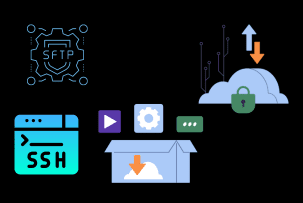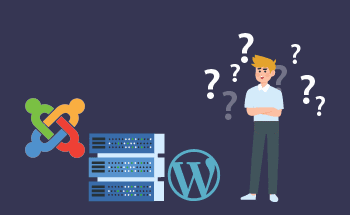What is the OSI model
12:46, 16.08.2022
OSI is an abbreviation, stands for Open Systems Interconnection model. We are talking about a 7-level open network model, where each level performs certain tasks. This model itself is designed to generalize and standardize the provision of means of network interaction in telecommunications and computer systems. In fact, the concept was developed to solve the problem of compatibility of different devices that differ from each other. Unify their work and bring them to some common standards, even if the communication protocols are different.
How OSI works
The OSI network model consists of two key elements:
- An abstract model consisting of 7 levels.
- A set of specialized universal communication protocols.
Absolutely any communication system can be dissected into many levels of abstraction in accordance with the OSI model, which simplifies its understanding and analysis. Each level describes its own specific aspect of device interaction, which makes this model extremely convenient for working with telecommunications and computer systems.
The seven-level OSI model describes the process of data transfer between two devices, the sender and the recipient. To understand each of the described levels, it is necessary to familiarize yourself with two important terms:
- Encapsulation is the process of transforming information from data into bits. This process takes place before transferring data from one device to another.
- Decapsulation is the transformation of information from a sequence of bits into data, occurs after receiving data packets on the receiving device side.
That is, it is impossible to transfer data in its pure form from one device to another – before that they need to be decomposed into the simplest signals, that is, bits. The bit in this case acts as an elementary unit of measurement of the amount of information.
Example: After a hard day's work, you log in to Telegram to read the latest news and watch new memes. You liked one of them especially much, and you decide to share it with your friend. When you send a picture to a friend, this data will have to go through a full data transformation cycle according to the OSI network model, starting from level 7 and ending with level 1. At the seventh level, information is presented in the form of data, at the first level – in the form of bits. This is the process of encapsulation – when transmitting data, the picture will be presented as a long sequence of bits, and already on the recipient's computer, this data is again decapsulated into a full-fledged image.
The whole process takes a few moments, so that the average user does not even notice anything. Next, we will tell you more about each of the seven levels of the OSI network model and tell you what happens on each of them.
Layer 1: Physical layer
The lower level at which physical signals are exchanged between devices. The computer does not know what a picture or video is, it perceives data only in the form of elementary zeros and ones. The bit in this case acts as the simplest data block of the protocol, or PDU.
At the physical level, devices can only operate with bits that are transmitted between devices in the form of electrical signals. The transmission of this data can be carried out both by wire and "over the air", via Bluetooth, Wi-Fi, GSM, etc.
Layer 2: Data link layer
At this level, data in the form of bits is transformed into frames. These frames contain information about the recipient's address, which ensures the correct identification of the recipient in the global network among millions of other users.
Data transfer between nodes is carried out via a physical channel, and MAC addresses are used to correctly determine the recipient and sender.
Layer 3: Network layer
Here the frames go into the state of data packets, and routing is used to transmit them. Your router determines the transmission path of data packets, and the transmission itself is carried out according to the IP/IPv4/IPv6 protocol, in rare cases IPX and AppleTalk can be used.
The network layer, among other things, performs the functions of tracking and correcting errors that occur during data transmission. And here the processes of routing and switching, packet segmentation are carried out.
Layer 4: Transport layer
Serves to control data transmission over the network, ensures the integrity of the data block. If any errors are detected at this layer, a partial solution is assumed within the framework of the OSI model, but usually, everything goes smoothly here.
At the transport level, data is divided into blocks of a certain size, and a priority is set for each of them, depending on the degree of importance. Segments, or datagrams, are used as data.
Layer 5: Session layer
At this level, pure data is operated on, and here it is decided what the process of data transfer between application processes will be: half-duplex or duplex.
The session level is used in application environments that need remote procedure calls. For example, when a video call occurs – after all, in this case it is necessary that data flows in both directions go synchronously. Synchronization of session connections is the most important function of the session layer, in addition to establishing and terminating connections between participating devices.
Layer 6: Presentation layer
Its function is to provide data between the network service and devices in a simple and understandable way. Data transfer from one encoding to another is also carried out at the sixth layer.
Another important function of the sixth layer of OSI is data encryption, without which anyone could intercept them, being able to freely read any information transmitted between devices.
Layer 7: Application layer
The upper layer of the OSI network model, which is often referred to as the "application layer". This is the level with which we, ordinary users, interact when working at a computer or laptop.
At the seventh layer, all key forms of human-machine interaction are carried out, starting with the use of network services and ending with their identification by password, address, and digital signature.
Conclusion
The seven-level OSI network model was adopted as a standard in 1994, and it is actively used to describe and understand various processes in the exchange of data between electronic devices. However, it has some disadvantages – for example, duplication of some protocols at different levels, as well as unequal distribution of functions at different levels. But today there are no more worthy analogues, so the OSI network model will remain relevant for many years to come.


